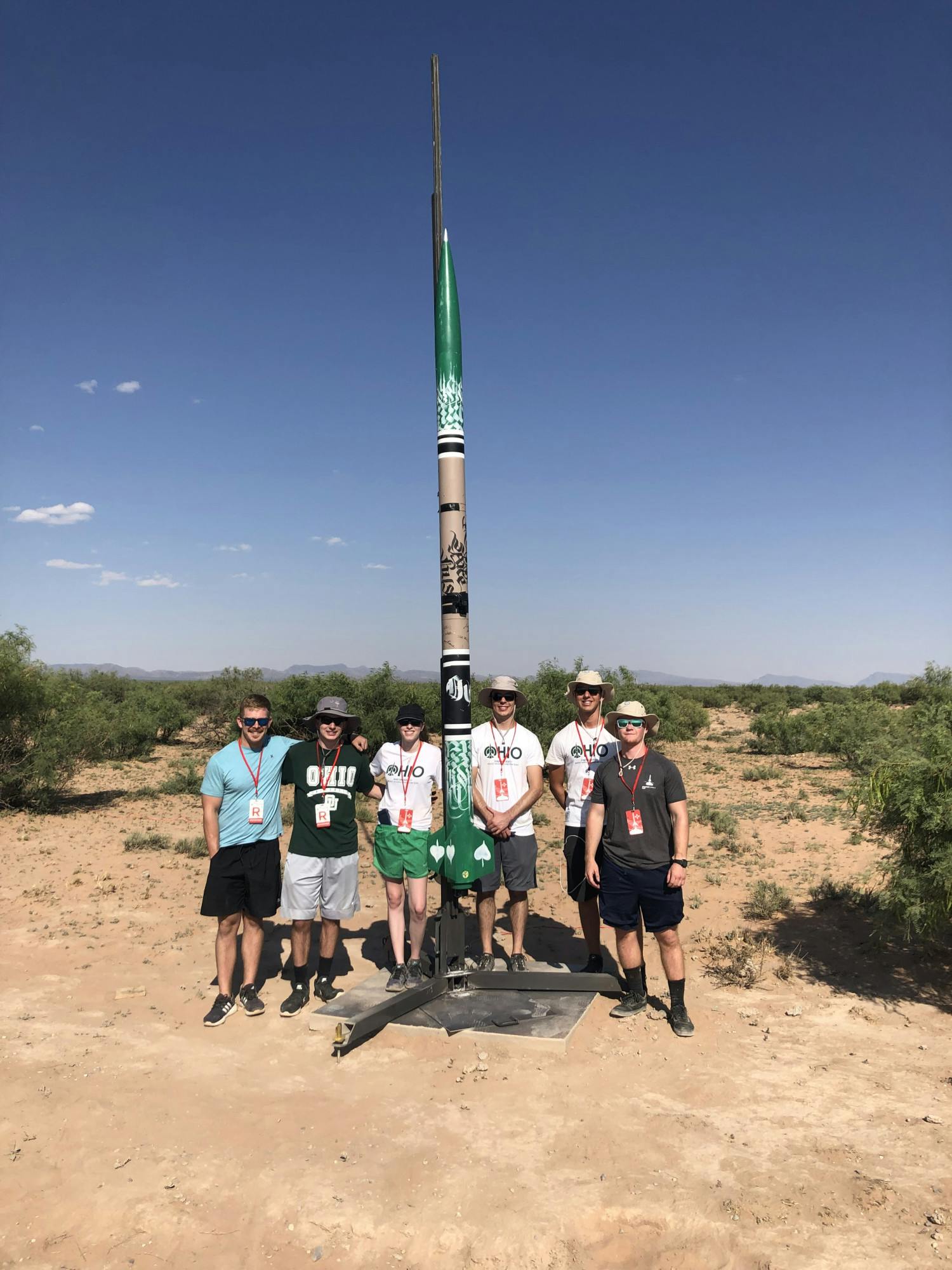Katy Perry and her group of crewmates are not the only individuals interested in exploring the world of space and rocketry. A team of dedicated Ohio University engineering students meets weekly to learn about rockets, practice building skills and launch their creations.
The Rocket Club consists of curious engineers who build low, mid and high-powered rockets which meet level one, two and three qualifications. Meeting these qualifications certifies the club to participate in high-power rocketry events and competitions.
These qualifications are defined by The National Association of Rocketry, where level one permits the “purchase of H and I impulse class motors,” level two allows the purchase and use of “J, K and L impulse class motors” and level three authorizes the usage of “M, N and O impulse class rocket motors,” essentially leveling up motor power with each letter.
Kyle Richards, a junior studying mechanical engineering, said the club was dismantled during the pandemic, but he and other students fought to reintroduce it.
“All the former leaders and information and the ability to pass on the reins was lost,” Richards said. “We wanted to bring back the club, and so that is what we did … we just finished up what I like to call the beginner phase of building the rockets.”
Richards said the group’s faculty advisor, Jay Wilhelm, is an associate professor in mechanical engineering and has been incredibly helpful with the rocket-building workshops. Additionally, the club received a grant from OU’s Russ College to help members build their low and mid-powered rockets.
Workshops were held throughout the semester in Stocker Center on West Green, where students worked in pairs or individually to construct rocket kits. The rockets were fired off of 29 millimeter, or F motors, producing “67 Newton seconds of impulse,” Richards claimed.
The rocket's thrust, which helps determine its specific impulse, is the “force which moves the rocket through the air,” the National Aeronautics and Space Administration claims. Determining the specific impulse of a rocket helps builders indicate its efficiency and make improvements if necessary.
Rocket Club encourages members to pursue academic interests outside the classroom and make connections with each other. Chad Mourning, assistant professor of computer science, is an engineering enthusiast and shared his best advice for those looking to explore their field at OU.
“What you do outside the classroom is just as important as what you do inside the classroom,” Mourning said. “If all you do is take the required courses and pass them to get your degree, you have done a strict subset of what everyone else is doing … you will not be competitive in today’s market.”
Mourning also works for the American Institute of Aeronautics and Astronautics as a member of the software and digital avionics technical committee. Although he does not work directly with rockets, Mourning said aviation safety is vital and engineering students should test their projects and hear from experts.
“In engineering, when you make a mistake, the results can frequently be catastrophic,” Mourning said. “I have a feeling rockets are very similar and if you get the ratios and the fuel wrong, maybe you are lucky enough it doesn’t take off at all, but maybe it explodes on the ground.”
Rocket Club has already attended a launching event, letting their creations take flight and soar through the air. The event was hosted by Wright Stuff Rocketeers, a section of the National Association of Rocketry located in Dayton.
“The reason we do it there is because a lot of these rockets need Federal Aviation Administration clearance to be launched,” Richards said. “Going here makes sure that everything is safe and … they have these big boxes for launch controlling … and this also has to be done in a very open area.”

Not only does the Rocket Club inspire engineering students, but it also builds a foundation for Bobcats to pursue their dreams. Archie Scott III, CEO and founder of Asynt Solutions, graduated from OU in 2019 and was president of the Rocket Club.
Asynt Solutions is a company dedicated to improving “infrastructure technology” and invented the world’s first “composite temporary traffic barrier system.” The “Ape Barrier” is an eco-friendly traffic barrier made out of fiberglass to replace the concrete barriers.
Scott said joining the Rocket Club was one of the best decisions he could have made, and he is forever grateful for the lessons learned and memories made. He had the opportunity to attend the Spaceport America Cup competition in Las Cruces, New Mexico, where the team launched their 13-foot-tall rocket.
“I managed a team of 20 engineers and we had to do some fundraising and convince the state to give up grants,” Scott said. “We had to manage the budget and the timeline and final project … all those skills really translate directly into what I do at a much larger level.”






